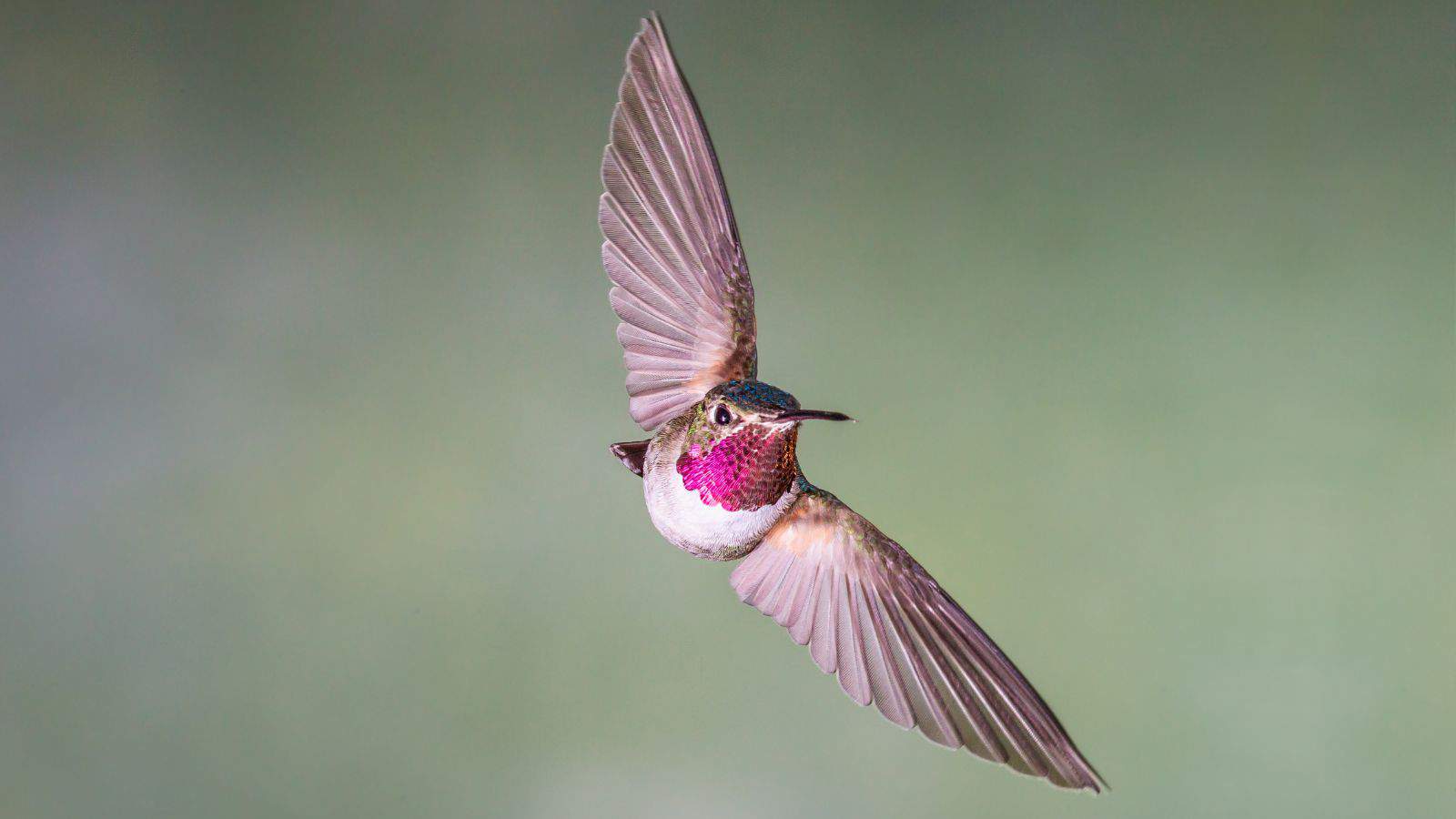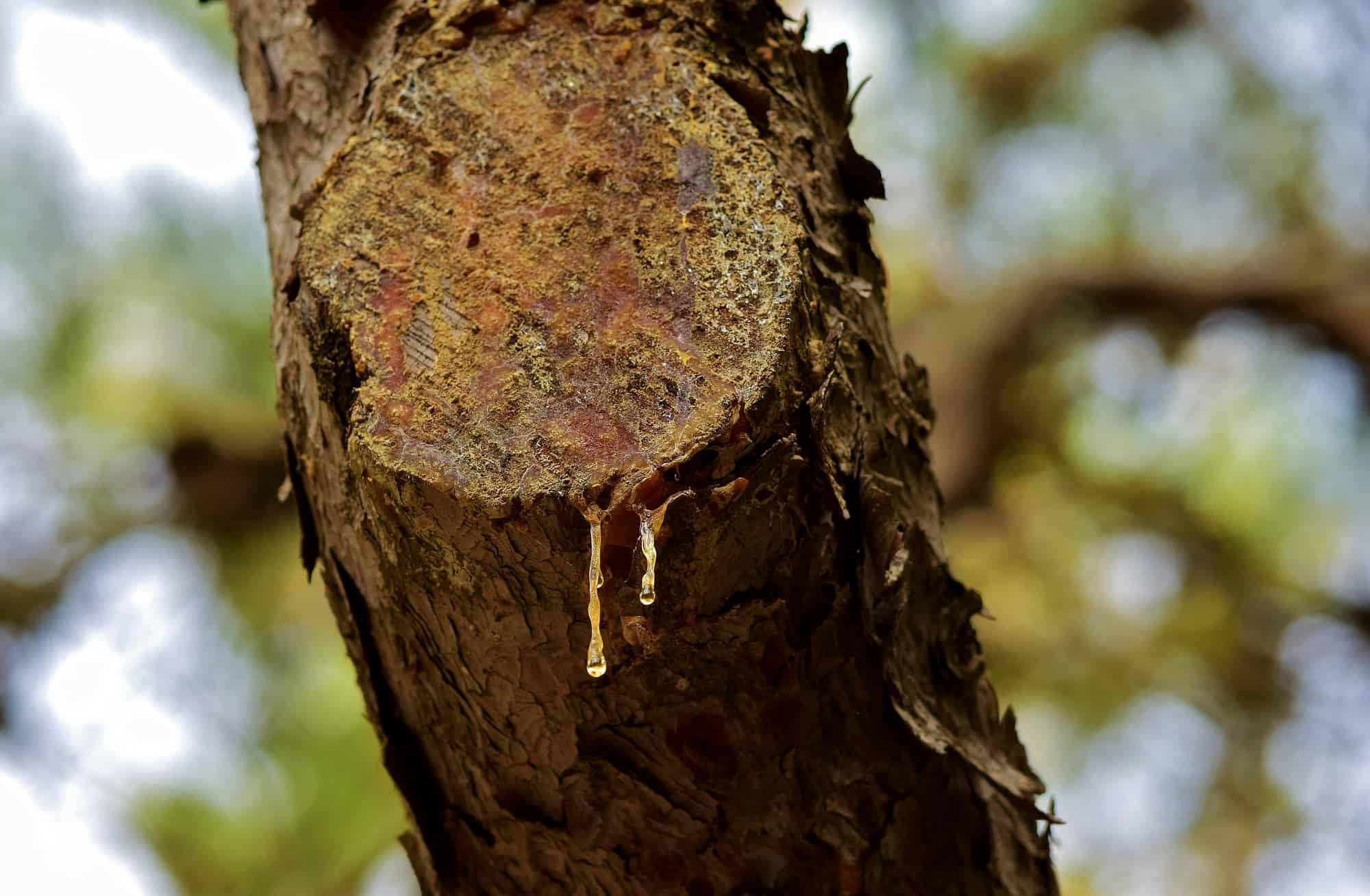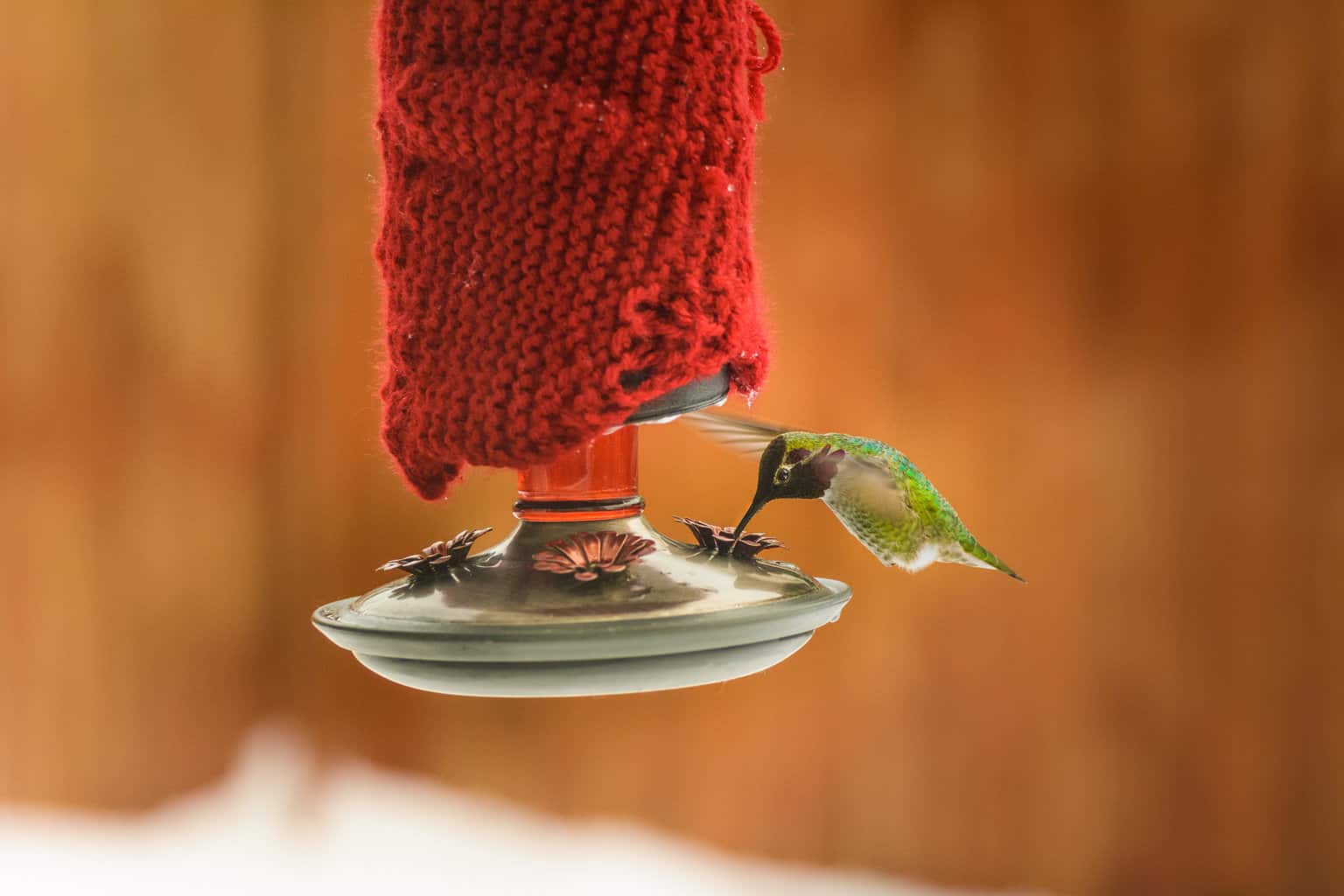Spring is on its way, and some migratory birds are already on their way north again. It’ll still be another month or so before most hummingbirds begin arriving back in the US, but when they do, they’re sometimes greeted by cold winds and wintry showers.
When food supplies are scarce and temperatures drop below freezing, you might be worried that the hummers won’t make it through such testing times.
So how do they survive the tough conditions? The answers are extraordinary.
Hummingbirds and Migration

As you already know, the primary way that hummingbirds escape cold, snowy weather is migration.
In the fall, 14 out of the 15 native hummingbird species in the USA migrate south to more tropical regions of Central and South America to enjoy a warmer getaway. Anna’s hummingbird is the only exception, which remains in milder regions along the Pacific coast throughout the winter.
But when hummingbirds return to North America for the breeding season, they can sometimes be met with uncomfortably cold weather. If you’ve ever seen a hummingbird in the spring snow, you might well ask, how on earth does such a small, delicate bird survive such harsh conditions? And what do they eat?
Eating Tree Sap

When hummingbirds begin returning in the spring, there are sometimes not many flowers to support them. Especially if the hummers get caught out in cold, snowy weather, there may be no nectar or insects for them to feed upon. So what do they eat instead?
One answer is: Tree sap! Tree sap is the sugary liquid that is drawn from tree roots up to their shoots in spring. It’s the watery liquid that maple syrup is made from, and can also be sourced from birch trees for human consumption. If you’ve never tried maple or birch sap, I’d highly recommend giving it a try!
Like several other birds, hummingbirds have a penchant for tree sap, too. While tree sap may not be as sweet as flower nectar, it makes an acceptable alternative when nectar supplies are low. Luckily, it rises at just the same time of year that hummingbirds are most hungry.
While hummingbird bills are ill-suited to excavating cavities in trees to tap the sap themselves, other birds with strong, sharp bills can do this job for them.
In the rocky mountains, for example, the broad-tailed hummingbird relies on red-naped sapsuckers to create a hole in the tree for the sap to ooze from. Once the red-naped sapsuckers are done feeding, the hummers can dive in and profit from the sap that may continue to run for several days if not weeks later.
Sustenance From Feeders

Thousands of years before humans began feeding birds, hummers would have relied purely on tree sap and the occasional insect to sustain themselves during cold spring weather. But since the advent of bird feeders, hummingbirds have been able to profit from the sugar nectar that we offer them, too.
While some people remain skeptical that sugar syrup is a wholesome food for hummingbirds, the calorie-rich treat can serve as a lifeline to birds that arrive early while other food sources are still scarce.
After their long journey north (which sometimes includes crossing the sea) hummers can be extremely hungry and need to top up their energy supplies. But in addition to being opportunistic feeders, hummers have some other tricks up their sleeves to survive frigid temperatures…
Torpor

Perhaps the most remarkable of a hummingbird’s adaptations to survive cold conditions is their ability to enter a state of torpor. This deep state of sleep is a little bit like a short but intense state of hibernation characterized by several physiological changes.
Deep Sleep
During torpor, hummingbirds go into a very, very deep state of sleep. If you’ve ever found a hummer in a tree or hanging from a feeder unable to wake up, it was likely in deep torpor.
Because they’re unable to wake up or escape danger while in torpor, hummingbirds will usually enter the state within the relative safety of high tree branches. In comical style, they’ll sometimes end up hanging upside down in a similar way that bats sleep!
Occasionally, hummers may fall from their perch during torpor. Finding a hummingbird on the ground in deep torpor can sometimes cause nature lovers to panic and imagine that the bird is close to death, but the state is actually more akin to a temporary coma. As soon as environmental conditions improve, the bird will wake up, and return to its regular busy activities!
Body Temperature
Like all birds, hummingbirds are warm-blooded, meaning they need to burn energy to either raise or lower their body temperature to around 106°F.
But the colder it gets, the more energy hummingbirds need to burn to maintain their warm blood. To overcome this, hummers lower their body temperature by an astonishing degree to save energy.
Whereas humans and other mammals suffer a dangerous state of hypothermia when our body temperature drops by 3° Fahrenheit, hummingbirds sacrifice a massive 50° Fahrenheit of their normal body temperature to conserve energy during deep torpor.
The science is simple: the closer the body temperature of the bird to the ambient temperature, the less energy is required to maintain it. Researchers in the Andes even recorded a metal-tailed hummingbird’s body temperature dipping to an astounding 38°F during a cold night!
Heart Rate
When on the wing, hummingbirds have the highest heart rate of any bird species. The massive wing speed of up to 70 beats per second demands such high blood circulation that the heart must beat at around 1200 beats per minute to sustain flight.
In deep torpor, however, hummingbirds reverse the extreme to save energy by reducing their heart rate to just 5% of its maximum. To save you doing the math, that means just 50 beats per minute. A pretty impressive reduction, right?
How Do Hummingbirds Recover From Torpor?
When the time comes for hummingbirds to come out of torpor and resume their normal activity, their wings and body begin to vibrate. As their body temperature warms up, their heart rate also increases and their body becomes ready for flight.
How Do Hummingbirds Know When To Migrate?
There are many mysteries to migration. How do the birds know where to go, and when should they commence their journey?
Believing that hummingbirds only leave when food becomes scarce, some people take down their feeders in the fall to avoid interfering with the bird’s seasonal rhythm. But according to researchers at Cornell Lab of Ornithology, food supplies make little difference. The greatest trigger for hummingbird migration is the shortening day length.
Similarly, the longer days of spring may initiate a hummingbird’s return journey north, but weather also plays a part. In colder springs, you may notice the hummers arriving two or three weeks later than in mild years.
When Do Hummingbirds Arrive Back in the USA?
The return of hummingbirds may be one of the most joyous harbingers of spring, but it’s also easy to forget when to expect them back.
Most ruby-throated hummingbirds arrive back in the southern states between mid-March and mid-May but typically don’t arrive back in New York State until the end of April or the start of May.
In the West, broad-tailed, black-chinned, and rufous hummingbirds begin crossing the Mexican border in mid-March, and can typically be seen in the North Rocky Mountains by mid-May. Climate change, however, may have an increasing impact on these timings as we go into the future.
Male hummingbirds tend to arrive back first, to establish their territories before females return. Watching them pitch fights to dominate particular areas can be quite spectacular, but these fights can be extremely fierce and can even result in serious injuries at times.
Conclusion
Entering a state of temporary dormancy known as torpor is the primary way that hummingbirds survive cold temperatures and snowy weather.
Additionally, finding alternative food sources to flower nectar such as tree sap and hummingbird feeders can help them pull through hard times.

